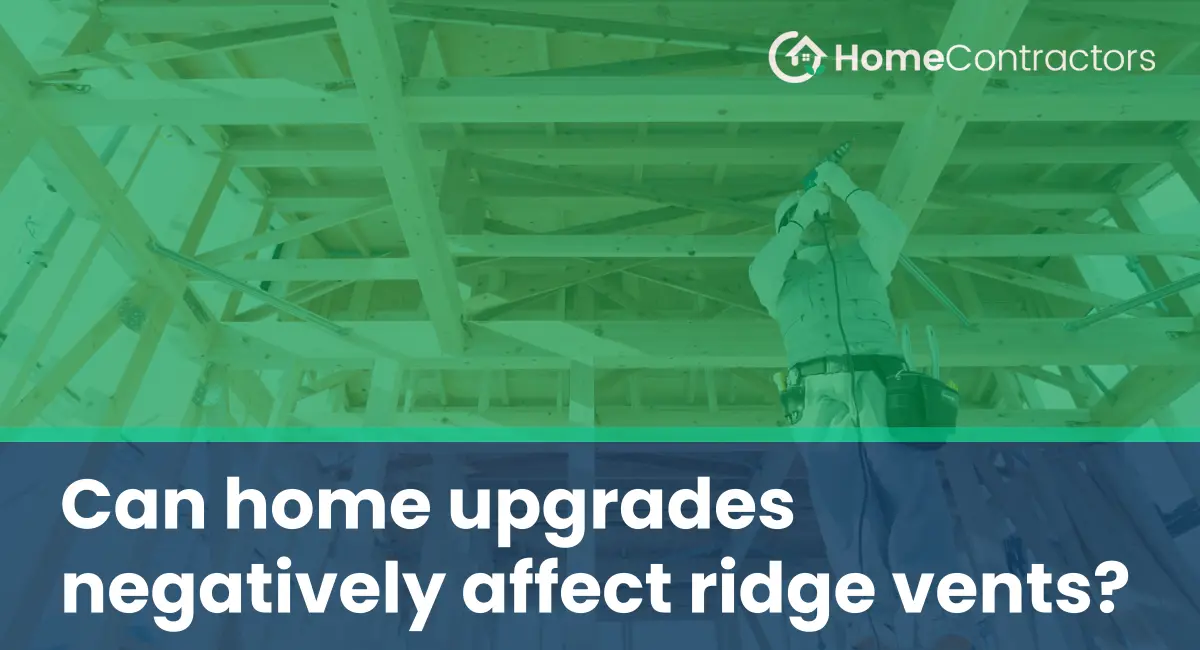Ridge vents are an integral component of a properly functioning roofing system. They are designed to provide passive ventilation, allowing hot air to escape from the attic and promoting better air circulation. However, when homeowners decide to make upgrades or modifications to their homes, they may inadvertently impact the performance of ridge vents. In this article, we will explore some common home upgrades and how they can potentially have a negative effect on ridge vents.
Understanding Ridge Vents
Before diving into the potential negative impacts, it is essential to have a clear understanding of ridge vents and their role in maintaining a healthy and functional home. Ridge vents are typically long, narrow openings along the ridge line of a roof. They are covered with a specially designed cap that allows air to flow out of the attic space, while also preventing water and pests from entering. This ventilation system helps regulate temperature and humidity levels within the attic, preventing moisture buildup and reducing the strain on cooling and heating systems.
Home Upgrades and Their Impact on Ridge Vents
1. Solar Panel Installations
Solar panels are becoming increasingly popular as homeowners look for ways to reduce their carbon footprint and save on electricity bills. While solar panels themselves do not directly impact ridge vents, the installation process can interfere with their performance. Installation typically involves adding mounting brackets to the roof, which may require modifications to the roof structure. If not done properly, this could lead to ridge vent blockages or restrictions, hindering ventilation.
To avoid this issue, it is crucial to work with solar panel installers who are knowledgeable about ridge vent systems. They should ensure that any modifications made during installation do not impede the airflow through the ridge vents.
2. Attic Insulation Upgrades
Improving attic insulation is a common home upgrade aimed at increasing energy efficiency and reducing heat loss. While insulation itself does not disrupt ridge vent functionality, it is essential to consider the ventilation requirements when enhancing insulation levels.
Insufficient air circulation can lead to moisture buildup and potential issues such as mold growth. Therefore, when upgrading attic insulation, it is crucial to ensure that the ridge vent system remains unobstructed. Proper installation techniques and use of baffles or similar devices can help maintain proper air movement through the ridge vents.
3. Roof Remodeling and Additions
Homeowners often opt for roof remodeling or additions to enhance the aesthetic appeal and functionality of their homes. However, these modifications can inadvertently impact ridge vents if not carefully planned and executed.
During roof remodeling, it is important to consider the impact of changes on the existing ridge vents. For example, if a new roofline or additional stories are added, it is essential to ensure that proper provisions are made to maintain or relocate ridge vents accordingly. Failing to do so can diminish the effectiveness of the ventilation system, leading to an increase in energy costs and potential moisture-related problems.
While home upgrades are often necessary and beneficial, it is important to consider their potential impact on ridge vents. Solar panel installations, attic insulation upgrades, and roof remodeling or additions can all disrupt the proper airflow through ridge vents if not planned and executed correctly. Homeowners should work with professionals who understand the importance of maintaining ridge vent functionality and take appropriate measures to ensure ventilation is not compromised during these upgrades. By doing so, homeowners can enjoy the benefits of their home upgrades without sacrificing the performance of their ridge vent system.
